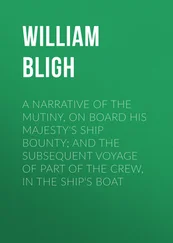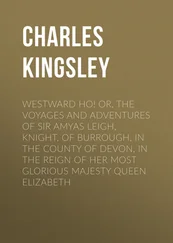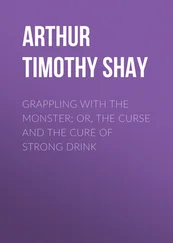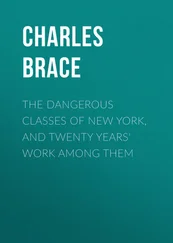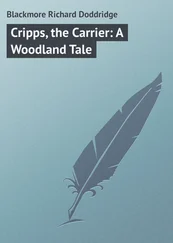Mattias Berg - The Carrier
Здесь есть возможность читать онлайн «Mattias Berg - The Carrier» весь текст электронной книги совершенно бесплатно (целиком полную версию без сокращений). В некоторых случаях можно слушать аудио, скачать через торрент в формате fb2 и присутствует краткое содержание. Город: London, Год выпуска: 2019, ISBN: 2019, Издательство: MacLehose Press, Жанр: Триллер, на английском языке. Описание произведения, (предисловие) а так же отзывы посетителей доступны на портале библиотеки ЛибКат.
- Название:The Carrier
- Автор:
- Издательство:MacLehose Press
- Жанр:
- Год:2019
- Город:London
- ISBN:978-0-85705-788-4
- Рейтинг книги:4 / 5. Голосов: 1
-
Избранное:Добавить в избранное
- Отзывы:
-
Ваша оценка:
- 80
- 1
- 2
- 3
- 4
- 5
The Carrier: краткое содержание, описание и аннотация
Предлагаем к чтению аннотацию, описание, краткое содержание или предисловие (зависит от того, что написал сам автор книги «The Carrier»). Если вы не нашли необходимую информацию о книге — напишите в комментариях, мы постараемся отыскать её.
The Carrier — читать онлайн бесплатно полную книгу (весь текст) целиком
Ниже представлен текст книги, разбитый по страницам. Система сохранения места последней прочитанной страницы, позволяет с удобством читать онлайн бесплатно книгу «The Carrier», без необходимости каждый раз заново искать на чём Вы остановились. Поставьте закладку, и сможете в любой момент перейти на страницу, на которой закончили чтение.
Интервал:
Закладка:
Then he had started to run the actual footage. First with “DOG, 81 kilotons, Enewetak atoll, April 1951”. Still not a thermonuclear weapon, but the final test of what came to be called the Mark 6 atomic bomb, which was kept in storage for almost a decade longer. In the foreground about thirty V.I.P. visitors were lined up in white deckchairs on the Officers’ Beach Club on some small Tahitian island paradise, just outside the security zone. In accordance with regulations they were all wearing their dark protective spectacles as they watched the ball of fire light up the sky, like at an outdoor cinema.
After that came the hydrogen bomb tests. “ERIE, 15 kilotons, Enewetak atoll, May 1956”: Edelweiss used to freeze the picture at the exact moment when the group turned away to protect their eyes. “STOKES, 19 kilotons, Nevada desert, August 1957”, like a jelly-fish with tentacles of sand and fire stretching all the way down toward the dunes. “OAK…”, in the same constantly blown-apart atoll, “…8.9 megatons, May 1958”: the soldiers sitting like schoolchildren at a picnic on the edge of a cliff, just far enough away according to the safety regulations of the time. And on he went, onward through the history of nuclear tests—right up to the comprehensive ban in 1996.
So we really did try to understand, each time Edelweiss showed us these scenes, at least once a week during my almost twelve years in NUCLEUS. All these shifting yet very similar expressions of our most unimaginable invention. The thermonuclear weapon which could not just split the nucleus of atoms but get them to melt together. Manipulate nature itself, simulate the sun’s inner processes, the very pre-condition for life—and from now on also for extinction.
To comprehend the incomprehensible.
6.04
By the time we landed in Palermo, Ingrid had also woken. As elegantly evasive as ever, she answered my hushed questions, again in Swedish and for safety’s sake on our way out through the arrivals hall, in the buzz of the crowd. Kept side-stepping until once again I gave up.
But so far as I could understand we were now meant to be in the very final phase of her Plan A., likely on the way to the resolution itself. The moment when I and this deranged woman would so literally be holding the fate of the world in our hands. The inhuman weight on our shoulders alone as the circle—the correspondences , the Nuclear Family, all these imperfect metaphors—came to be closed. When the picture on her screen was finally complete, all those triangles and crosses were joined up once and for all. Our entire global nuclear weapons system either short-circuited or launched.
For some reason I had followed her all the way here, to this very last stop. Maybe so that I could prevent something from happening. Maybe only, as in a movie, because I had to see how it all ended.
I followed her like a dog on a leash, or a puppet his master. Nothing that Ingrid did was ever predictable. So instead of the airport train we took the bus in from Falcone-Borsellino, named after the two lawyers who fell victim to the Mafia in the early 1990s, blown sky high and at the same time becoming secular martyrs.
Again we chose to hide in plain sight, among crowds of people. Standing up, in a packed bus, in the firing line, where anyone at all could have picked us off through the windows. And what’s more on the way into the heart of the city, in infernal traffic, right at the start of the riposo .
I assumed that Ingrid too had counted on us being watched, in one way or another. That one or more people would have followed us—were waiting for us here. That the only possible reason why Edelweiss had let us go was that we were both now to be “spools of thread”. That they would wait, possibly until the resolution itself, to see how far up and how deeply the conspiracy had penetrated. The work which, according to Ingrid, she had been pursuing across the world for decades.
I looked at her as she stood pressed tightly against me with the bulky pack between her feet. Looked at her new face: more Garbo than Ingrid Bergman. The woman who had been my guide and mentor throughout my adult life. First spell-binding lecturer, then supervisor for my dissertation, eventually Alpha for both me and the whole Team. After that some sort of cicerone. Someone who did not lead you out of things, but rather only further inside. Deep into myself, the heart of the entire system. We two against the world .
She did not look back, kept staring out through the window: hungry, inquisitive, like a charter tourist. I soon took my eyes off her and did the same. I had been here so many times before, had landed directly at Sigonella in the south-eastern region, take-off point for not only our bombers but also the unmanned drones heading for the Middle East. Our fort facing the Muslims.
I had never before taken the airport bus, and had this ground-level view of the island. It all now became both more and less frightening. From miles up in the air, or on the screen simulations, there were no people to be seen—no-one to be defended or exterminated. Here they were everywhere. On the bus and outside, swarming, sweating, yelling, sounding their horns. The human factor.
When we got off at Palermo Centrale, Ingrid chose the first person we came across, in an Italian which sounded flawless. It seemed that it was not far from the station to the Palazzo Abatellis she was trying to find. But there was a strangely hot wind blowing through the alleys as we hurried with our heavy bags and, even though there were fewer than forty-eight hours until Christmas Day, I soon found myself sweating. The Mediterranean lay glittering at the end of a few streets, a picture-postcard scene.
I did not realize where we were going—until we stopped outside a brown-walled building, the Palazzo Abatellis, housing the regional art museum. I had not been there before, but now knew exactly where we were. She had given me a reproduction of that painting on one of my uneven birthdays, a very good miniature to hang in my office next to Bruegel’s better-known version. The one which I had taken out of its frame and hidden away in my combat pack before the flight.
“16.48. We’ve got twelve minutes, my treasure,” Ingrid said.
We cut across the breathtakingly beautiful courtyard and walked straight into Hall Two. And there it was. Mighty, imposing, overwhelming.
Even though I had studied most of what there was to be read about the twenty by twenty-foot fresco, which had to be split into four sections so that it could be moved from the Palazzo Sclafani during the war, and thought that I was prepared for it, it took my breath away. The immense power in this burlesque vision of Doomsday from the mid-fifteenth century. One of many models for Bruegel’s own version, inspired by the Black Death which started to run rampant in Europe during the fourteenth century and, according to the sign next to it, painted by an unknown artist.
What this version of “The Triumph of Death” was missing was the Fleming’s strangely nuclear sense of doom, the sickly yellowish background, everything burned out and bare. Instead, the skies were full of small out-of-place flowers—and none of the people depicted around the edges were being loaded into what could be seen as railway carriages or other modern death transports, as in Bruegel’s masterpiece.
On the other hand, the fresco which now filled our vision had an even stronger focus. You could not take your eyes off the skeleton riding in the center of the painting, or avoid being drawn in by its maniacal smile. Not least because it was precisely the central part of the image which had been the most damaged by its hasty transport during the indiscriminate bombing of the city. It really looked as if someone had set out to destroy its central portion—with some kind of acid.
Читать дальшеИнтервал:
Закладка:
Похожие книги на «The Carrier»
Представляем Вашему вниманию похожие книги на «The Carrier» списком для выбора. Мы отобрали схожую по названию и смыслу литературу в надежде предоставить читателям больше вариантов отыскать новые, интересные, ещё непрочитанные произведения.
Обсуждение, отзывы о книге «The Carrier» и просто собственные мнения читателей. Оставьте ваши комментарии, напишите, что Вы думаете о произведении, его смысле или главных героях. Укажите что конкретно понравилось, а что нет, и почему Вы так считаете.








